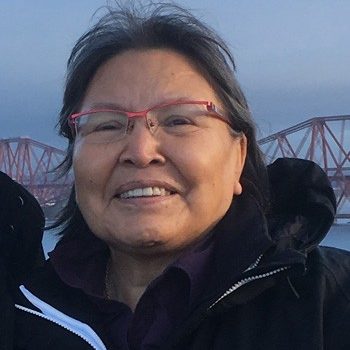Fibbie Tatti, MA
Doctor of Science (DSc), 2022
For preserving and promoting Indigenous languages and culture

Born to the Sahtúgot’ı̨nę First Nation on Great Bear Lake in the Northwest Territories (NWT), Tatti is a fluent speaker, writer and storyteller of the North Slavey Language. She has dedicated her career to preserving and promoting Indigenous languages and culture.
During her 23 years at the NWT Department of Education, Tatti brought together Dene Elders, teachers and language specialists. Collectively, they developed and published Dene-language children’s books and the first Dene languages curriculum, called Dene Kede, a legislated document that became a model for Indigenous language curricula. For her master’s degree in Indigenous Language Revitalization from the University of Victoria, Tatti wrote her thesis on Sahtúgot’ı̨nę spirituality.
Throughout her career Tatti has worked closely with a broad array of leaders, Elders, language authorities and education professionals. She co-chaired the Aboriginal Language Task Force, which led to the Indigenous languages of the NWT becoming official languages. As NWT Languages Commissioner, she acted as an advocate and monitoring agent of the NWT Official Languages Act, which ensures government services in, and the preservation and development of, the 11 NWT official languages.
Tatti was also involved in organizing the Dene Nation, which led to both the Sahtu People’s land claim settlement with the Government of Canada in 1993 and the community of Deline’s 2016 self-government agreement with the governments of Canada and the NWT.
Tatti hosted a CBC North TV current affairs program, becoming one of the first Indigenous people to work with NWT media. In recognition of her knowledge and experience, she was an official delegate in the Governor General of Canada’s 2003 state visit to Russia.
At the ceremony
Fibbie Tatti, was granted her Doctorate of Science at the fall 2022 ceremony for the Faculty of Arts and Science.
You can watch the video below.